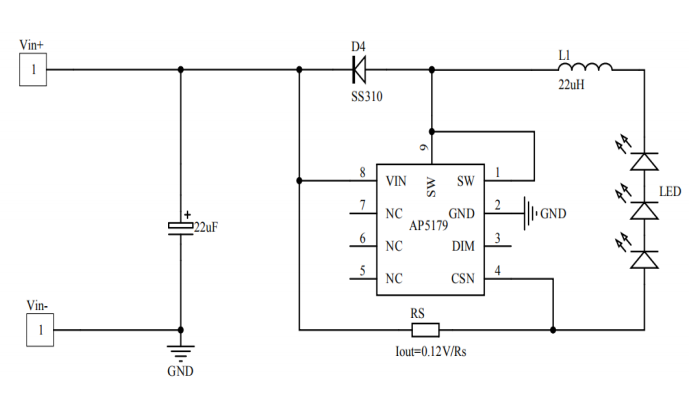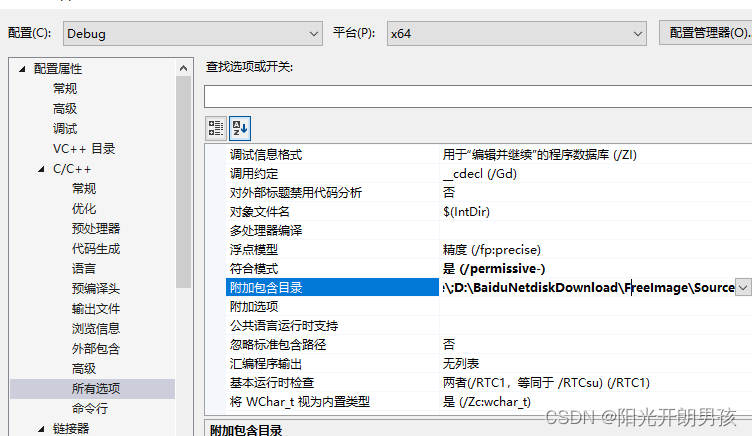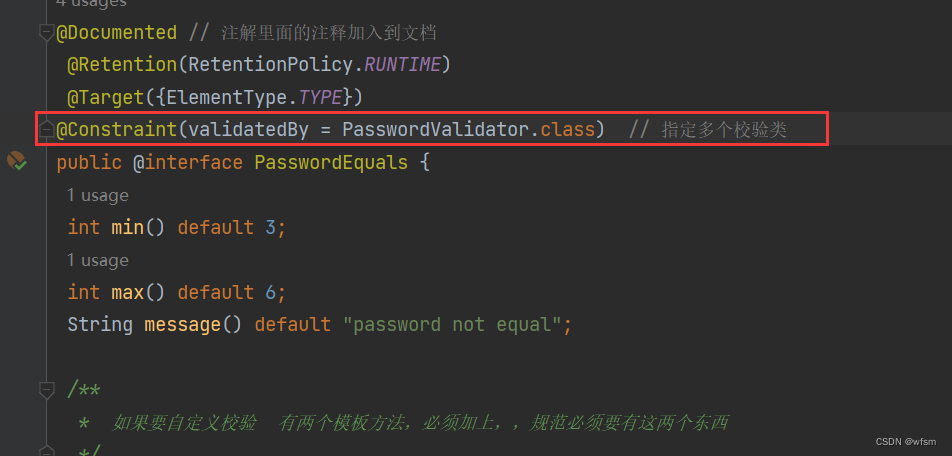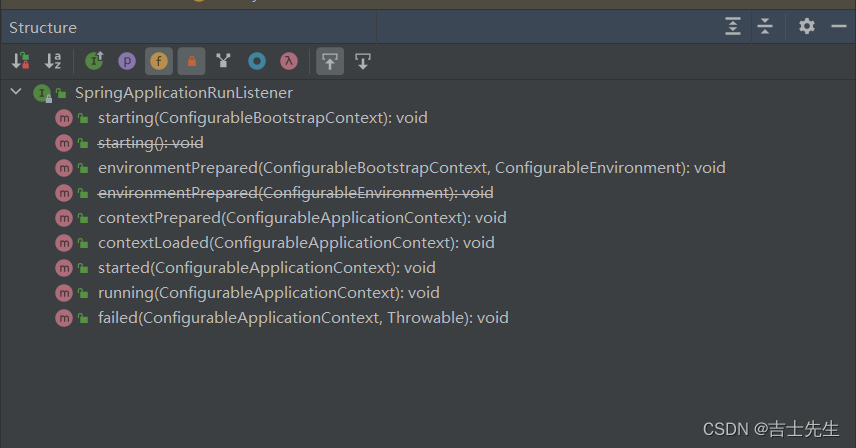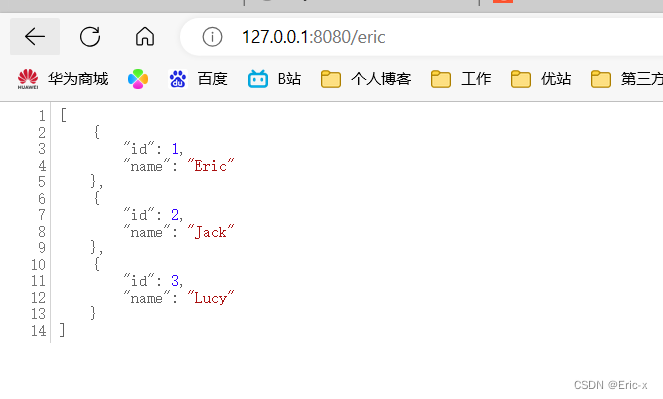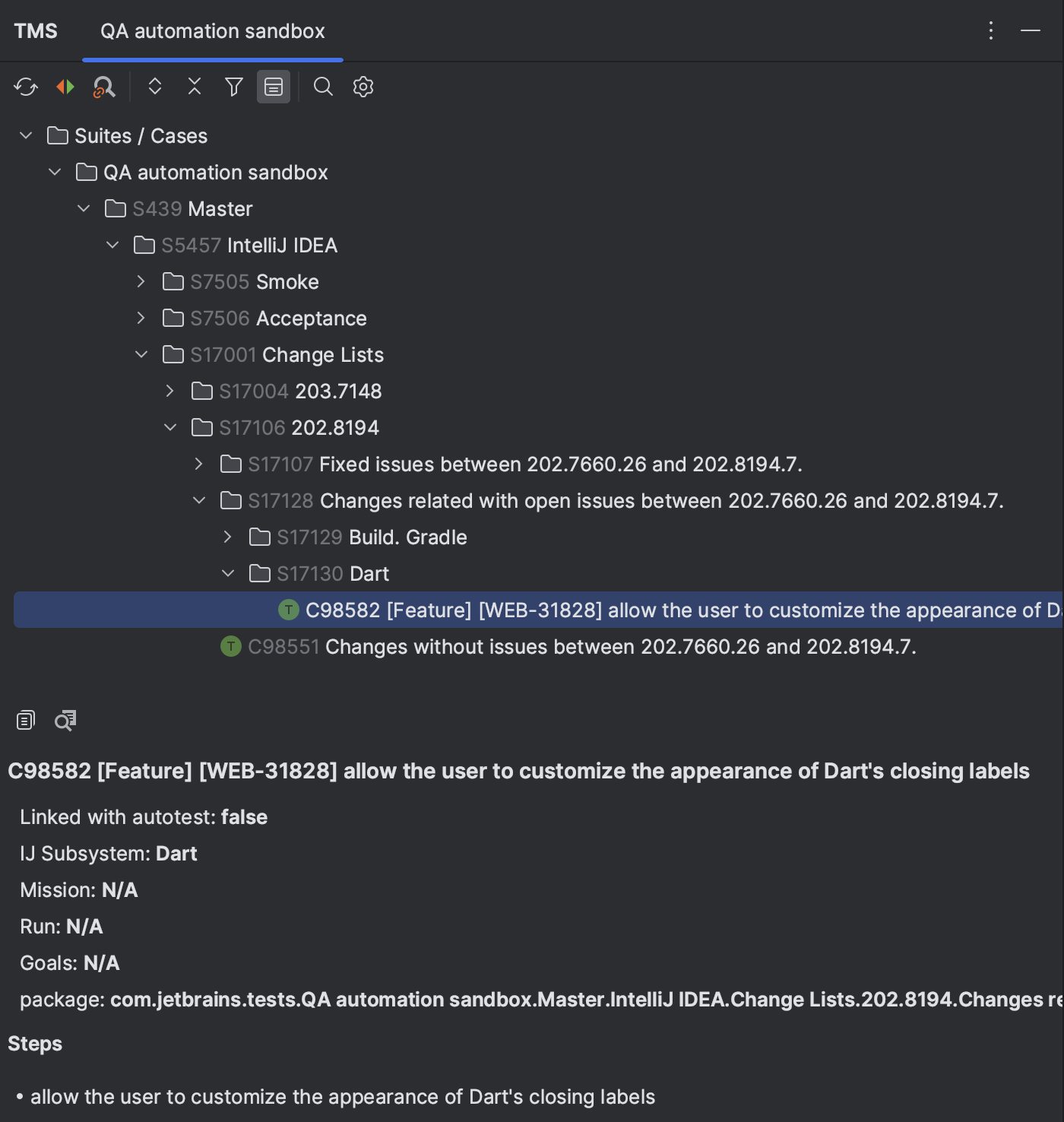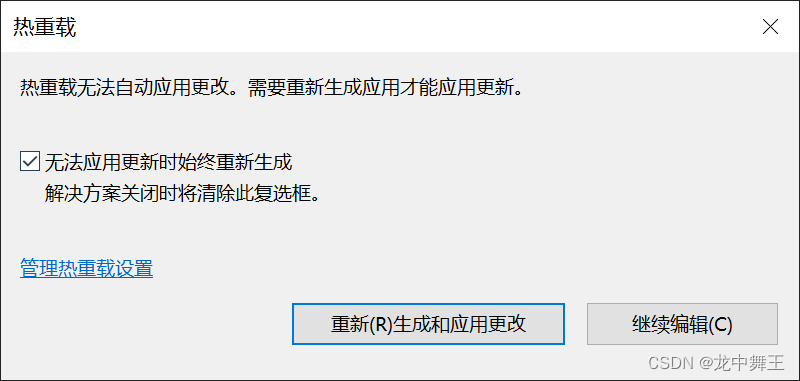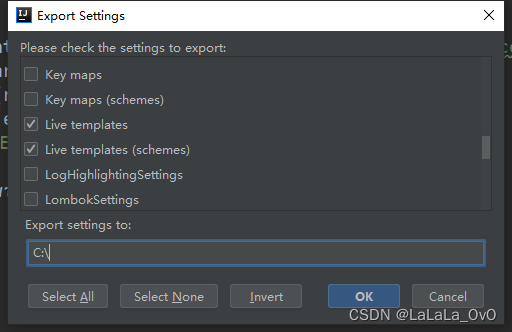文章目录
- 前言
- 其他篇章
- 参考链接
- 0. 前置准备
- 1. System call tracing (moderate)
前言
好像没啥前言
其他篇章
环境搭建
Lab1:Utilities
参考链接
官网链接
xv6手册链接,这个挺重要的,建议做lab之前最好读一读。
xv6手册中文版,这是几位先辈们的辛勤奉献来的呀!再习惯英文文档阅读我还是更喜欢中文一点,开源无敌!
官方文档
0. 前置准备
很惭愧,以前github用得少,这一步折腾了老半天,我再说一遍我个人的开发流程——先在windows下git一个本地仓库,然后用VS编辑,写完后git push上去,在WSL的对应地方git pull下来,然后编译运行。
前面环境配置中我为了连接到我个人的远程仓库,是直接把原本的远程仓库删了的,然后lab1做完做到lab2发现这个lab整体不是循序渐进的,而是彼此分离的,每个实验需要选择相应的分支,因此就要重新弄一下:
git remote add base git://g.csail.mit.edu/xv6-labs-2022
git fetch base
git checkout syscall
git push --set-upstream origin syscall
当然,别忘了加.gitignore
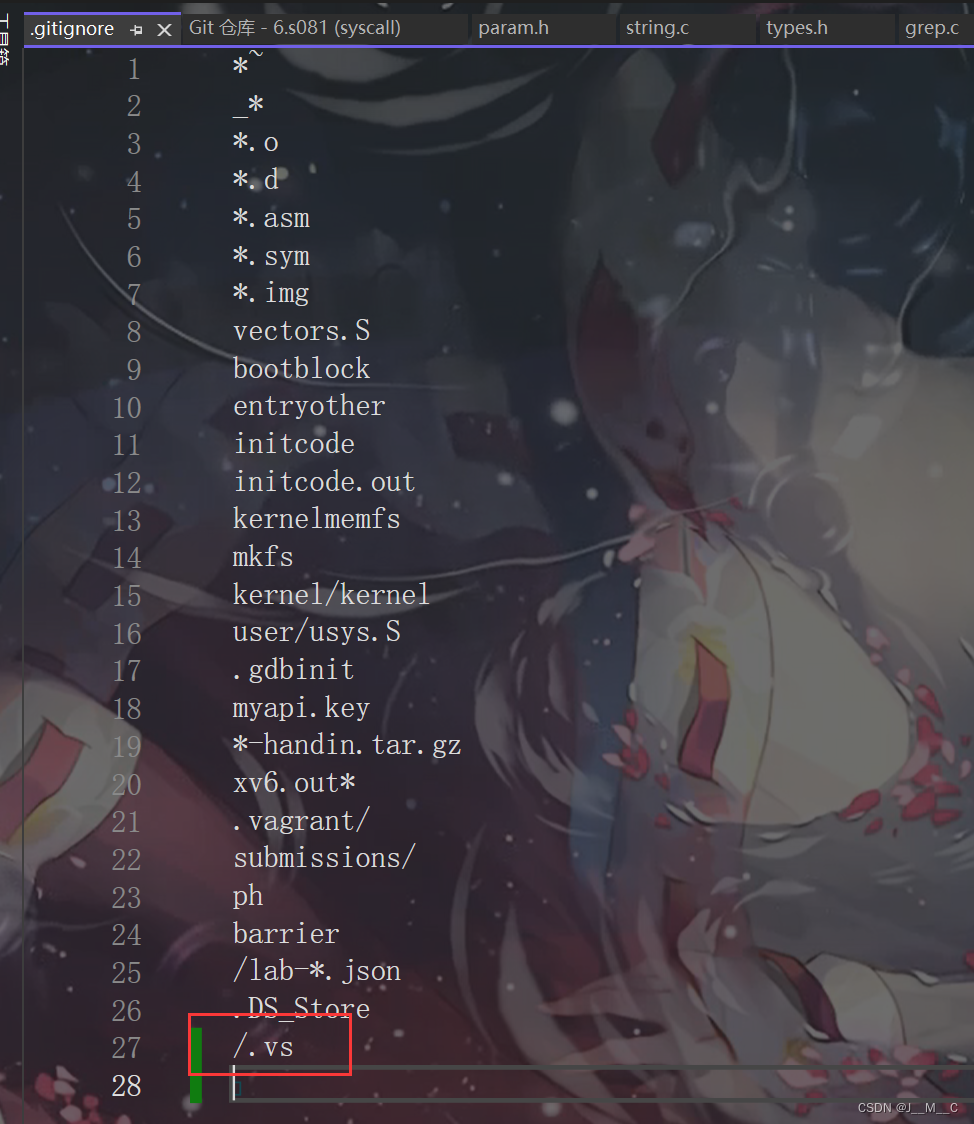
1. System call tracing (moderate)
gdb教学我就不说了,看看这个task。

先简单研究一下我们需求的这个trace是干什么的吧,trace顾名思义,tracing,追踪、寻迹的意思,比如ray tracing,就是光线追踪,这个命令接受一个传参mask,内涵是一个掩码,每一位对应一个系统调用的一个序号,比如传入32,代表 32 1<<SYS_read,2147483647 代表追踪所有syscall,具体的这些值定义在了kernel/syscall.h里,我们待会也会写
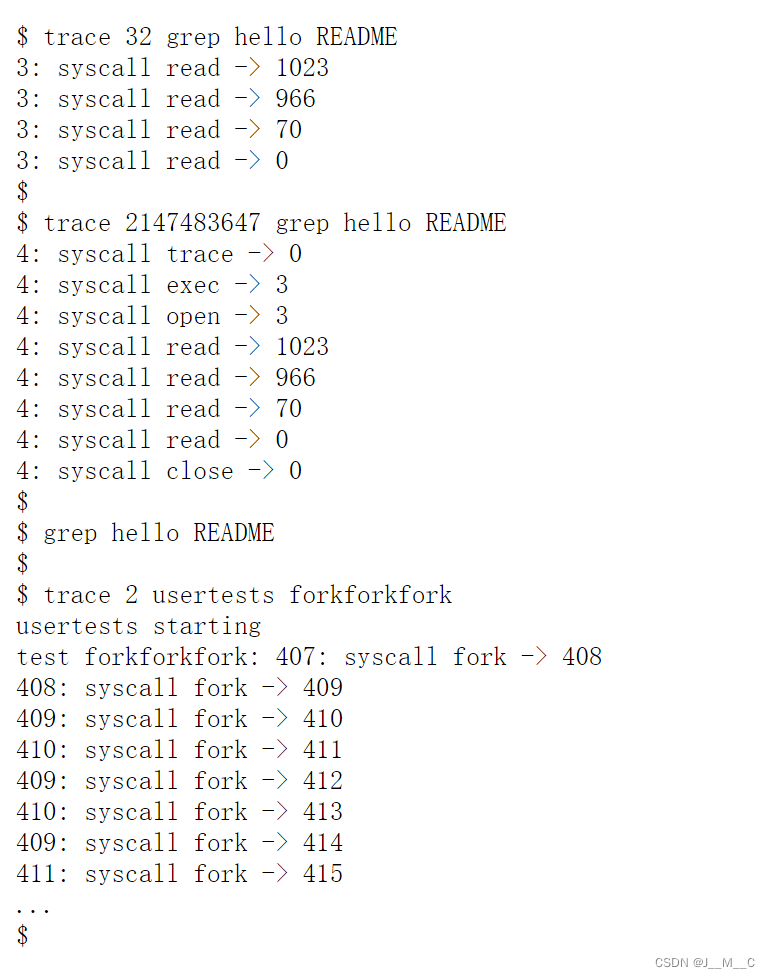
初步了解之后,就写实现吧,这个task按照hint的步骤来很清晰:

Add $U/_trace to UPROGS in Makefile
首先添加makefile,司空见惯了。
Run make qemu and you will see that the compiler cannot compile user/trace.c, because the user-space stubs for the system call don’t exist yet: add a prototype for the system call to user/user.h, a stub to user/usys.pl, and a syscall number to kernel/syscall.h. The Makefile invokes the perl script user/usys.pl, which produces user/usys.S, the actual system call stubs, which use the RISC-V ecall instruction to transition to the kernel. Once you fix the compilation issues, run trace 32 grep hello README; it will fail because you haven’t implemented the system call in the kernel yet.
然后说这个时候make,会找不到trace,我们要在用户态user/user.h里加上trace的声明,根据原文 It should take one argument, an integer “mask”, whose bits specify which system calls to trace. 可知,这玩意应该接受一个int,然后返回也是一个int(返回值其实不影响来着):

然后我们在user/usys.pl下添加这么一行,这里的意思是声明了一个trace系统调用的入口,实际上这一段会为我们在usys.S中生成一段汇编代码。

然后在内核syscall.h中给它注册一个number
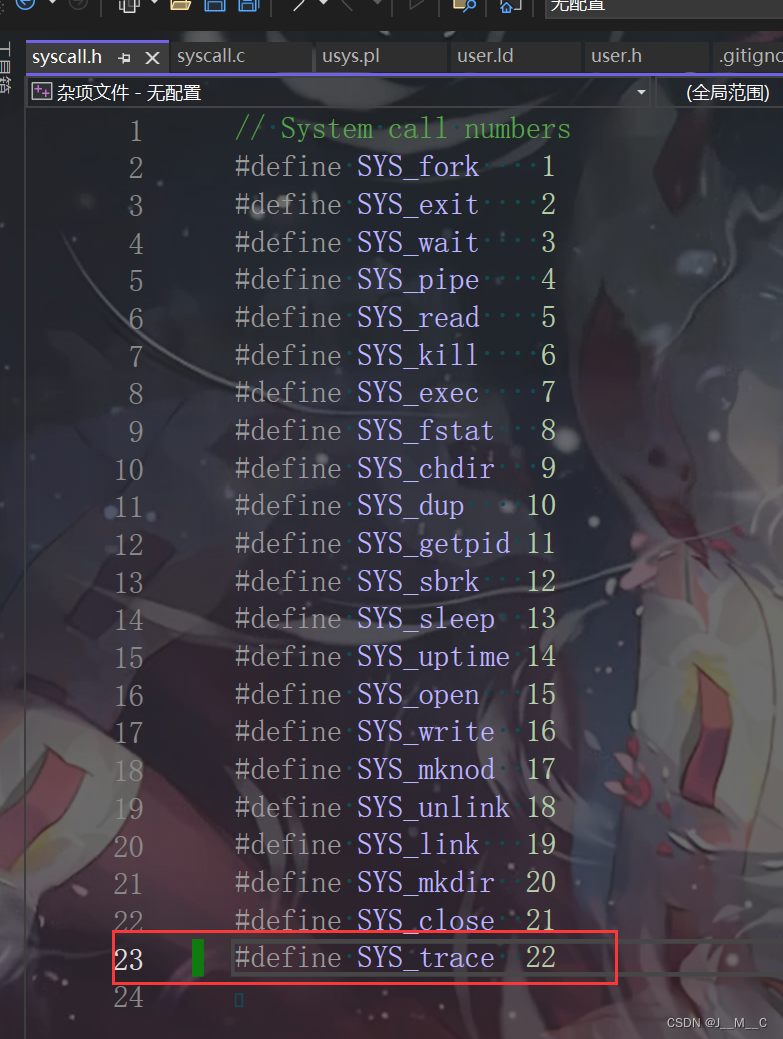
Add a sys_trace() function in kernel/sysproc.c that implements the new system call by remembering its argument in a new variable in the proc structure (see kernel/proc.h). The functions to retrieve system call arguments from user space are in kernel/syscall.c, and you can see examples of their use in kernel/sysproc.c.
然后模仿着添加原型?
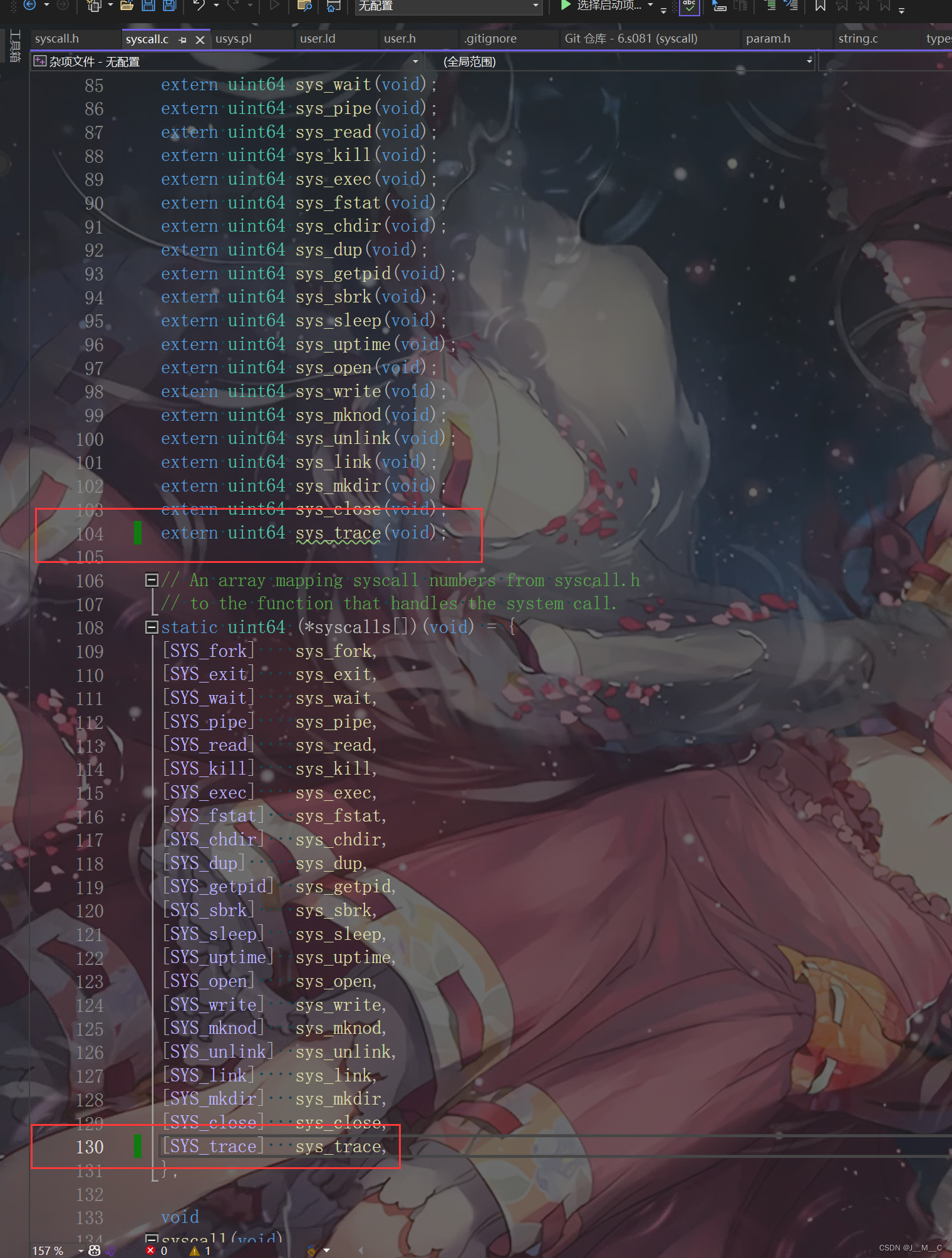
这里简单解释一下后面这个syscalls数组,可能很多人没有看懂这,首先这是个static的不用说,然后这是个函数指针的数组(我一向很反感那些什么数组指针指针数组混着说的,直接说成装指针的数组不就一目了然了吗),函数返回值为uint64,参数为void,显然是为上面extern的那些函数准备的东西,这些都比较简单,后面的是个小feature了,它本身叫作指派初始化器(Designated Initializers),来自C99,意思就是给方括号里的那一位初始化为右边的值

但是可以看到,C99的指派初始化器的形式是[N] = expr的,中间需要一个等号连接,这里没有,它是来自GCC私货,原文出现在介绍指定初始化器的时候:An alternative syntax for this that has been obsolete since GCC 2.5 but GCC still accepts is to write ‘[index]’ before the element value, with no ‘=’. 意味着大家在自己使用时加个等号是更符合standard的写法。
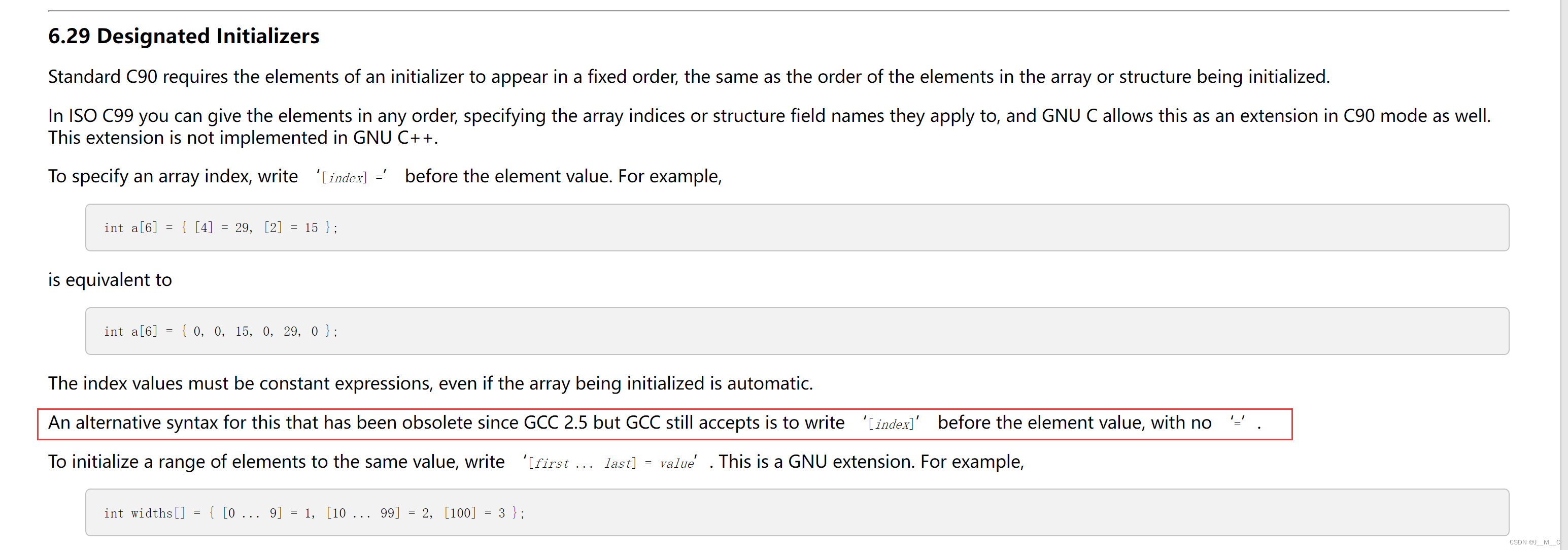
然后叫我们仿照着kernel/sysproc.c里的其他函数给trace写一个定义进去:
uint64
sys_trace(void)
{
return 0;
}
使用argint从寄存器取出用户传入的参数:
int mask;
if (argint(0, &mask) < 0) // 保存用户传入的参数
return -1;



